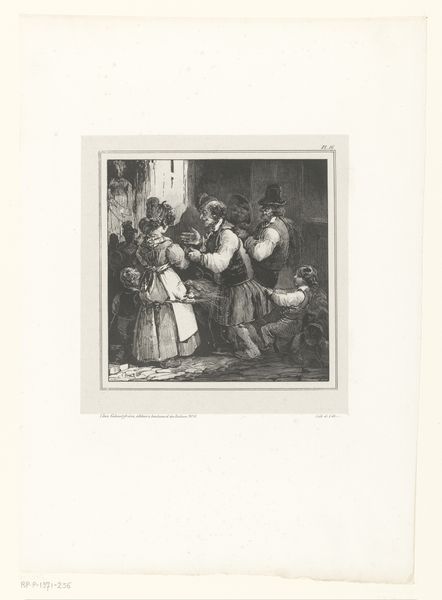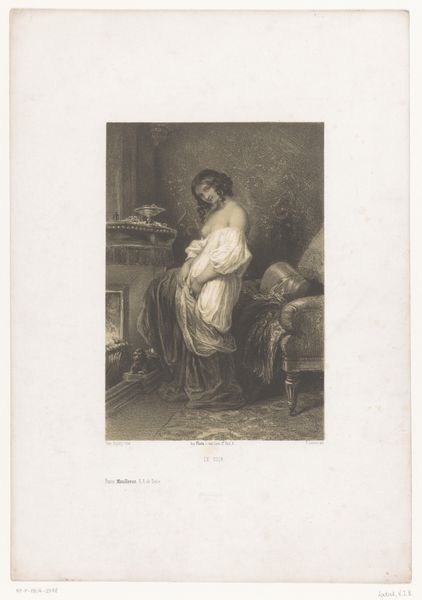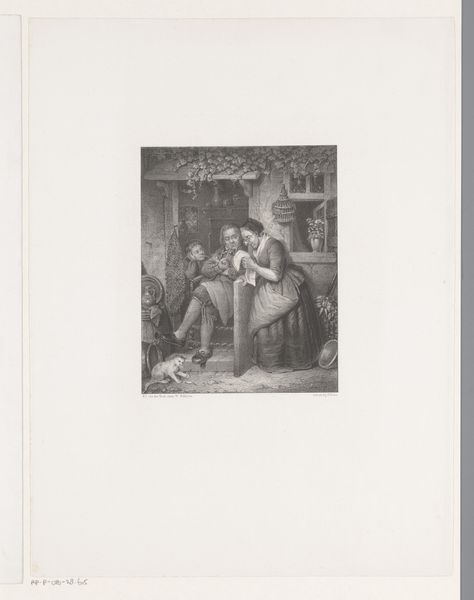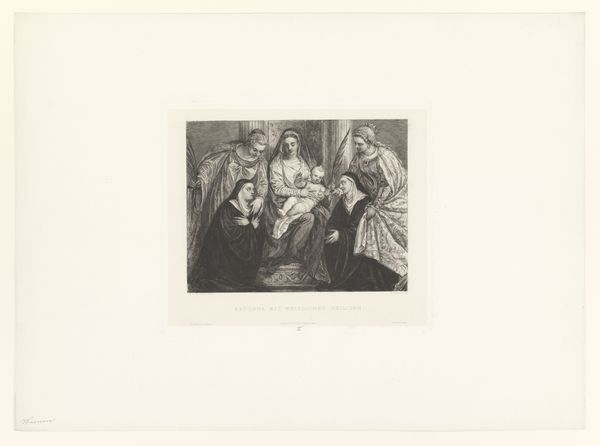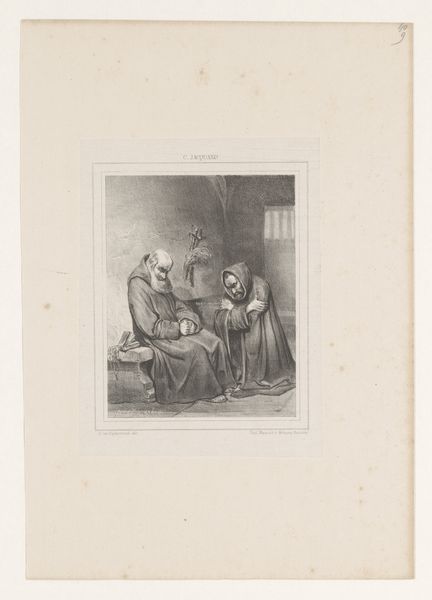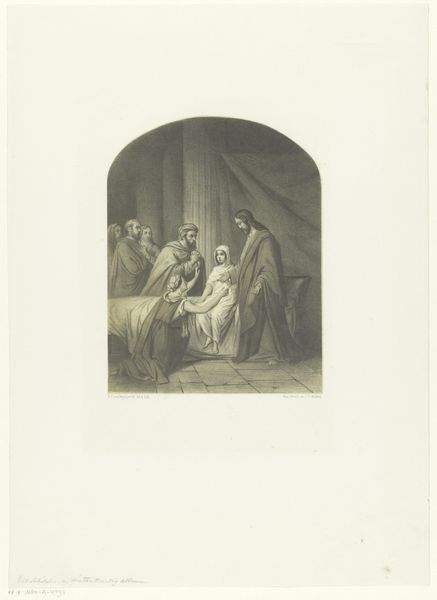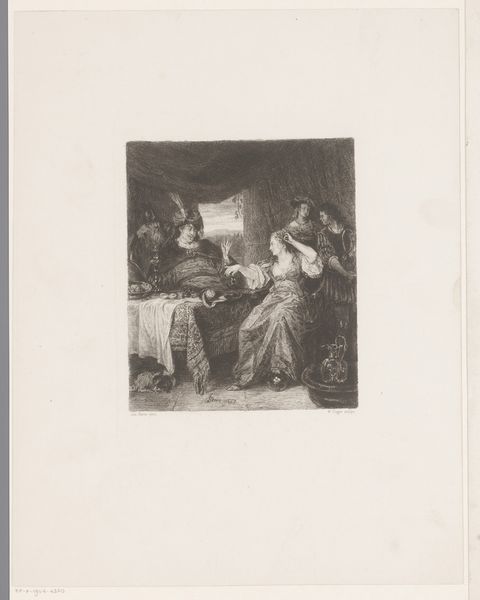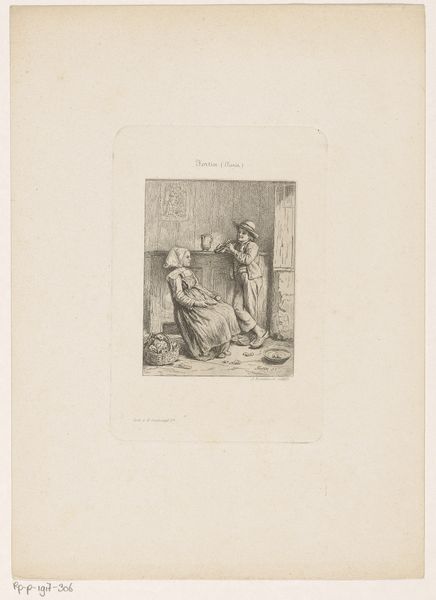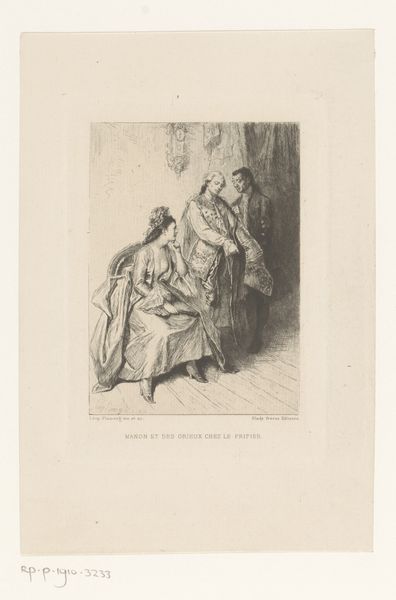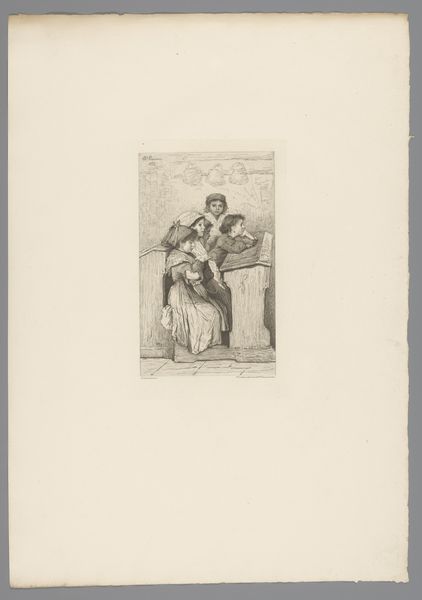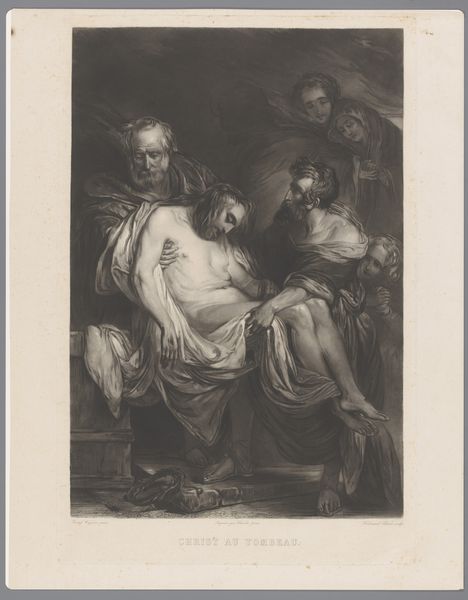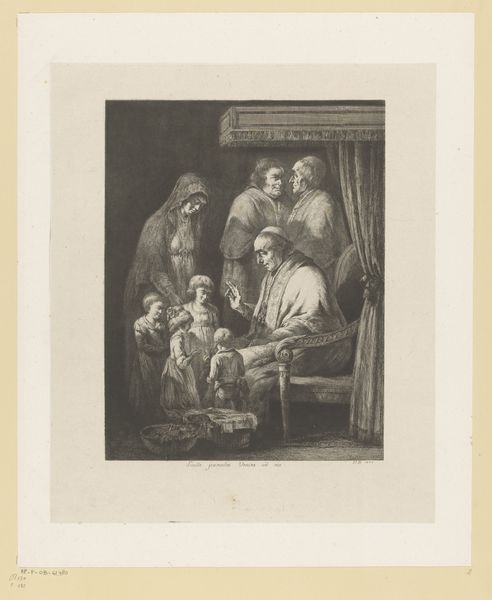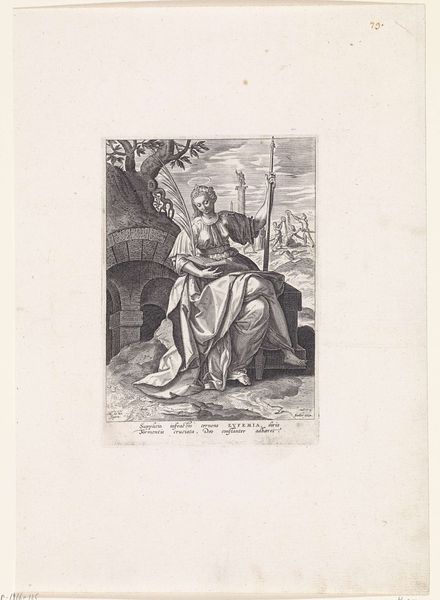
Dimensions: height 150 mm, width 108 mm
Copyright: Rijks Museum: Open Domain
Léopold Flameng made this print of Manon Lescaut and Chevalier des Grieux in the 19th century using a process called etching. Lines are incised into a metal plate with a sharp needle, then acid is applied to eat away at those lines, creating an image that can be inked and printed. The fine lines and delicate shading lend an intimate quality to the scene, drawing us into the characters' romantic embrace. The etching process is labor-intensive, requiring skilled hands and careful attention. In many ways, printmaking democratizes art, allowing images to be reproduced and distributed widely. By choosing etching, Flameng not only showcased his technical skill but also participated in a broader cultural movement that sought to make art accessible to a wider audience, at a time when production and consumption were rapidly changing. The beauty of the final image belies the work involved in its making, challenging us to recognize skill, labor and context as a means of expanding how we view art.
Comments
No comments
Be the first to comment and join the conversation on the ultimate creative platform.
